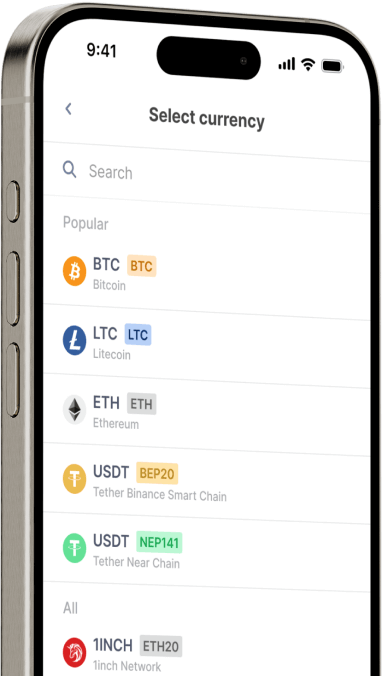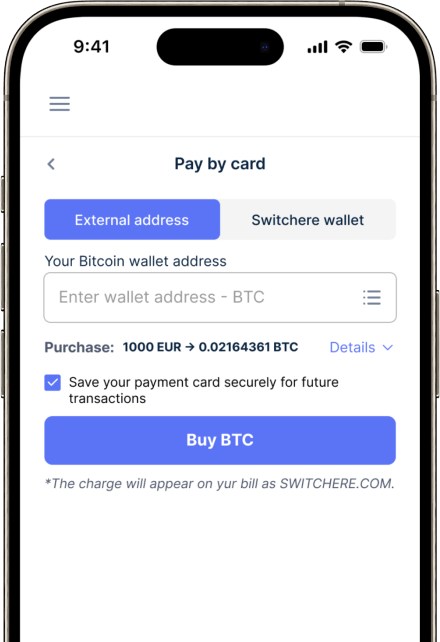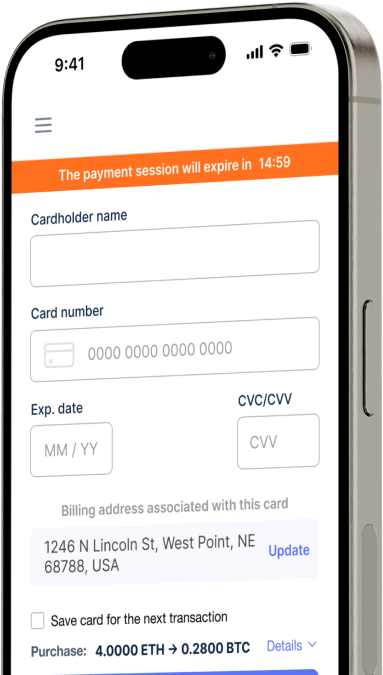Converter
Algerian dinar (DZD) em Polkadot (DOT) instantaneamente
Compre Polkadot (DOT) com Algerian dinar (DZD) facilmente na Switchere e beneficie-se de transações rápidas e seguras.
Sobre
Polkadot (DOT)
O Polkadot (DOT) surge como um protocolo de blockchain de última geração, projetado para facilitar a comunicação e a interoperabilidade sem precedentes entre cadeias em uma arquitetura dimensionável, segura e com várias cadeias. Seu principal objetivo é permitir que diferentes blockchains, conhecidos como parachains, troquem informações e transações de forma confiável. Isso aborda o desafio significativo do siloing de blockchain, em que redes individuais operam isoladamente. A tecnologia principal do Polkadot gira em torno de uma cadeia de retransmissão central, que fornece segurança compartilhada e consenso para os parachains conectados. Esses parachains podem ser personalizados para casos de uso específicos, construídos usando a estrutura flexível Substrate, promovendo um ecossistema diversificado de cadeias especializadas.
O token DOT nativo desempenha várias funções cruciais nesse ecossistema de ativos digitais. Ele é utilizado para a governança da rede, permitindo que os detentores participem da tomada de decisões sobre atualizações de protocolo e alocações de tesouraria. O DOT também é essencial para o staking no mecanismo de consenso NPoS (Nominated Proof-of-Stake) da Polkadot, em que os nomeadores apoiam os validadores para proteger a rede e ganhar recompensas. Além disso, os tokens DOT são vinculados por projetos para alugar slots de parachain por meio de um mecanismo de leilão, permitindo que eles se conectem à cadeia de retransmissão e se beneficiem de seus recursos de segurança e interoperabilidade em pool. Esse modelo tokenômico garante a participação ativa e o alinhamento com a saúde da rede a longo prazo, posicionando o Polkadot como uma infraestrutura Web3 fundamental para um sistema de registro digital verdadeiramente interconectado.
Compre outras 150+ criptomoedas por Algerian dinar (DZD)
Outras moedas para Algerian dinar (DZD)
-
DZD a ZRX
-
DZD a 1INCH
-
DZD a AAVE
-
DZD a ACH
-
DZD a ALGO
-
DZD a TLM
-
DZD a ANKR
-
DZD a APE
-
DZD a NFT
-
DZD a API3
-
DZD a APT
-
DZD a ARPA
-
DZD a AUDIO
-
DZD a AVAX
-
DZD a AVAX
-
DZD a AXS
-
DZD a BADGER
-
DZD a BAL
-
DZD a BNT
-
DZD a BAT
-
DZD a BNB
-
DZD a BSW
-
DZD a BSV
-
DZD a BLUR
-
DZD a BONE
-
DZD a CTSI
-
DZD a CELR
-
DZD a CELO
-
DZD a CEL
-
DZD a LINK
-
DZD a CHZ
-
DZD a CHR
-
DZD a C98
-
DZD a COMP
-
DZD a CFX
-
DZD a PEOPLE
-
DZD a CVX
-
DZD a ATOM
-
DZD a CTC
-
DZD a CRV
-
DZD a DAI
-
DZD a DASH
-
DZD a MANA
-
DZD a DENT
-
DZD a DGB
-
DZD a DYDX
-
DZD a XEC
-
DZD a EOS
-
DZD a ETC
-
DZD a ENS
-
DZD a ETHW
-
DZD a FET
-
DZD a FIL
-
DZD a FLOKI
-
DZD a GALA
-
DZD a GNO
-
DZD a ONE
-
DZD a HBAR
-
DZD a HOT
-
DZD a HOOK
-
DZD a ICX
-
DZD a ILV
-
DZD a IMX
-
DZD a INJ
-
DZD a ICP
-
DZD a IOST
-
DZD a IOTX
-
DZD a JASMY
-
DZD a JST
-
DZD a KAVA
-
DZD a KCS
-
DZD a KSM
-
DZD a KNC
-
DZD a LDO
-
DZD a LQTY
-
DZD a LPT
-
DZD a LOOKS
-
DZD a LRC
-
DZD a LUNA
-
DZD a MKR
-
DZD a MASK
-
DZD a EGLD
-
DZD a ALICE
-
DZD a NEAR
-
DZD a XEM
-
DZD a NEXO
-
DZD a NOT
-
DZD a NMR
-
DZD a OKB
-
DZD a OMG
-
DZD a ONT
-
DZD a EDU
-
DZD a OP
-
DZD a OGN
-
DZD a CAKE
-
DZD a PAXG
-
DZD a PENDLE
-
DZD a DOT
-
DZD a POL
-
DZD a QTUM
-
DZD a QNT
-
DZD a RDNT
-
DZD a XRD
-
DZD a RVN
-
DZD a REN
-
DZD a RSR
-
DZD a RLC
-
DZD a RPL
-
DZD a SFP
-
DZD a SHIB
-
DZD a SKL
-
DZD a SXP
-
DZD a STND
-
DZD a STG
-
DZD a XLM
-
DZD a GMT
-
DZD a STORJ
-
DZD a STMX
-
DZD a SUSHI
-
DZD a SNX
-
DZD a USDT (Polygon)
-
DZD a USDT (AVAC)
-
DZD a USDT (BEP20)
-
DZD a USDT (ERC20)
-
DZD a USDT (SPL)
-
DZD a USDT (NEP141)
-
DZD a USDT (FA2)
-
DZD a USDT (TRC20)
-
DZD a USDT (JETTON)
-
DZD a XTZ
-
DZD a GRT
-
DZD a SAND
-
DZD a TFUEL
-
DZD a THETA
-
DZD a RUNE
-
DZD a TON
-
DZD a TUSD (BEP20)
-
DZD a TUSD (TRC20)
-
DZD a TWT
-
DZD a UOS
-
DZD a UMA
-
DZD a UNI
-
DZD a USDC (Polygon)
-
DZD a USDC (SPL)
-
DZD a USDC (OP)
-
DZD a USDC (BEP20)
-
DZD a USDC (AVAC)
-
DZD a USDC (ARB)
-
DZD a USDC (ERC20)
-
DZD a VET
-
DZD a VRA
-
DZD a WAXP
-
DZD a WOO
-
DZD a WLD
-
DZD a WBTC
-
DZD a WMINIMA
-
DZD a XDC
-
DZD a YFI
-
DZD a YGG
-
DZD a ZIL
Como comprar Polkadot (DOT)
Perguntas frequentes
-
Qual é o método principal para comprar Polkadot (DOT) com Dinar Argelino (DZD)?
Pares de negociação diretos DZD/DOT em grandes exchanges de criptomoedas são incomuns. O método de entrada fiduciária (fiat on-ramp) mais prevalente envolve o uso de um mercado peer-to-peer (P2P). Os usuários normalmente compram uma stablecoin como USDT com DZD por meio de uma transferência bancária local e, em seguida, trocam essa stablecoin por DOT em uma exchange que lista o par DOT/USDT, proporcionando acesso ao ecossistema Polkadot.
-
Existem requisitos de conformidade KYC/AML para negociações P2P de DZD para DOT?
Sim, praticamente todas as plataformas P2P respeitáveis que funcionam como um gateway fiduciário exigem que os usuários completem a verificação Conheça seu Cliente (KYC) e Antilavagem de Dinheiro (AML). Este processo geralmente envolve o envio de um documento de identidade emitido pelo governo e, às vezes, um comprovante de endereço para garantir um ambiente de negociação seguro и cumprir as regulamentações financeiras internacionais.
-
Como posso armazenar meus DOT com segurança após a transação com DZD?
Para segurança ideal, você deve transferir seus DOT da exchange para uma carteira digital não custodial. Isso lhe dá controle total sobre suas chaves privadas. As opções incluem carteiras de extensão de navegador, carteiras móveis compatíveis com a rede Polkadot ou carteiras de hardware para o mais alto nível de segurança. Nunca deixe grandes quantias de ativos digitais em uma exchange a longo prazo.
-
Qual é a função principal do Polkadot e por que adquirir DOT?
Polkadot é um protocolo multichain projetado para interoperabilidade entre cadeias, conectando várias blockchains especializadas conhecidas como 'parachains' em uma única rede unificada. Sua Relay Chain central fornece segurança compartilhada. O token nativo DOT é essencial para três funções principais: governança da rede, staking por meio de seu modelo Nominated Proof-of-Stake (NPoS) para proteger a rede e 'bonding' para conectar uma nova parachain à Relay Chain.
-
Que tipo de taxas estão envolvidas na conversão de DZD para DOT?
O processo envolve várias etapas de taxas. Primeiro, os vendedores P2P podem cobrar um prêmio em sua taxa de câmbio. Segundo, há uma taxa de rede para transferir a stablecoin comprada. Terceiro, a exchange de criptomoedas cobrará uma taxa de negociação (taxa de maker/taker) pela conversão de stablecoin para DOT. Finalmente, uma pequena taxa de rede na Relay Chain do Polkadot é necessária para sacar seus DOT para uma carteira digital não custodial.
-
Posso participar da governança on-chain do Polkadot depois de comprar DOT?
Sim, possuir tokens DOT concede a você o direito de participar do sofisticado sistema de governança on-chain do Polkadot. Os detentores de tokens podem propor referendos, votar em atualizações de rede e eleger membros do conselho que gerenciam o tesouro da rede. Essa participação ativa é uma utilidade central do ativo digital DOT e uma característica fundamental do framework Substrate sobre o qual o Polkadot é construído.




